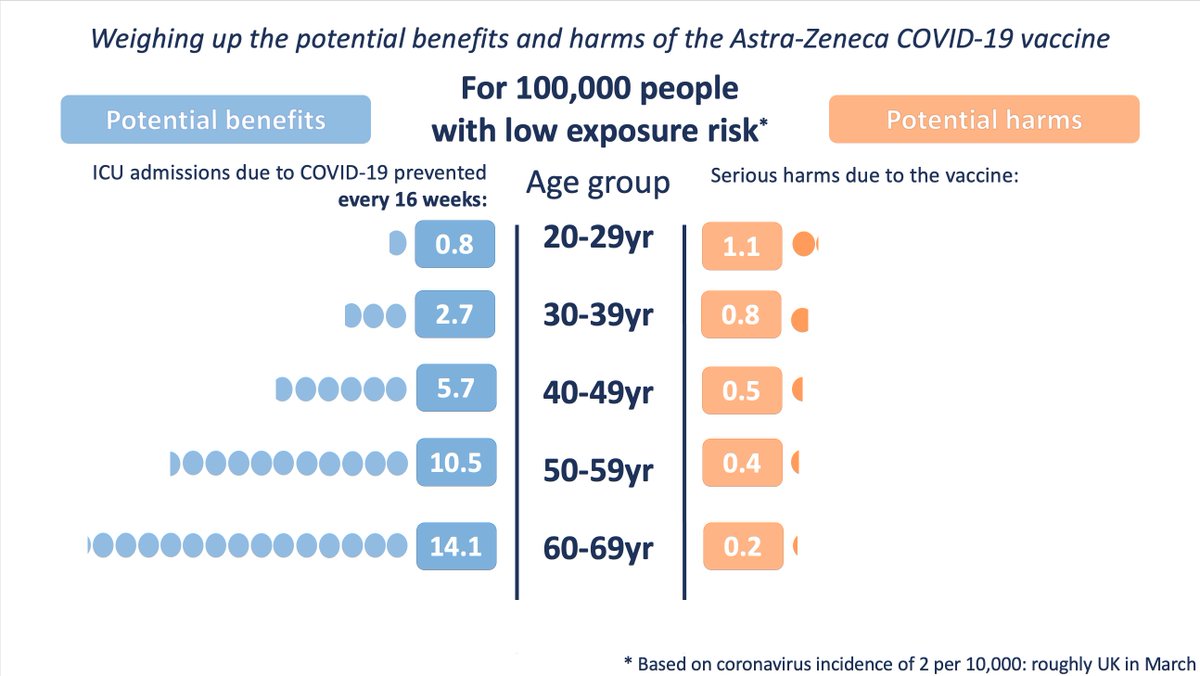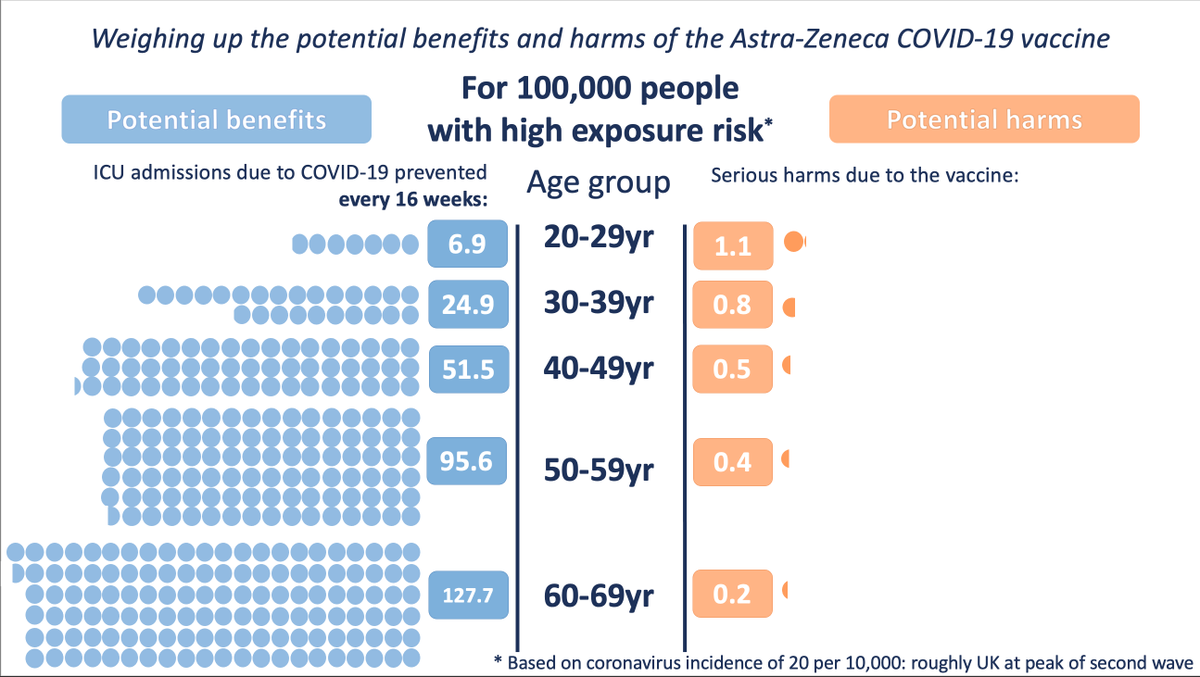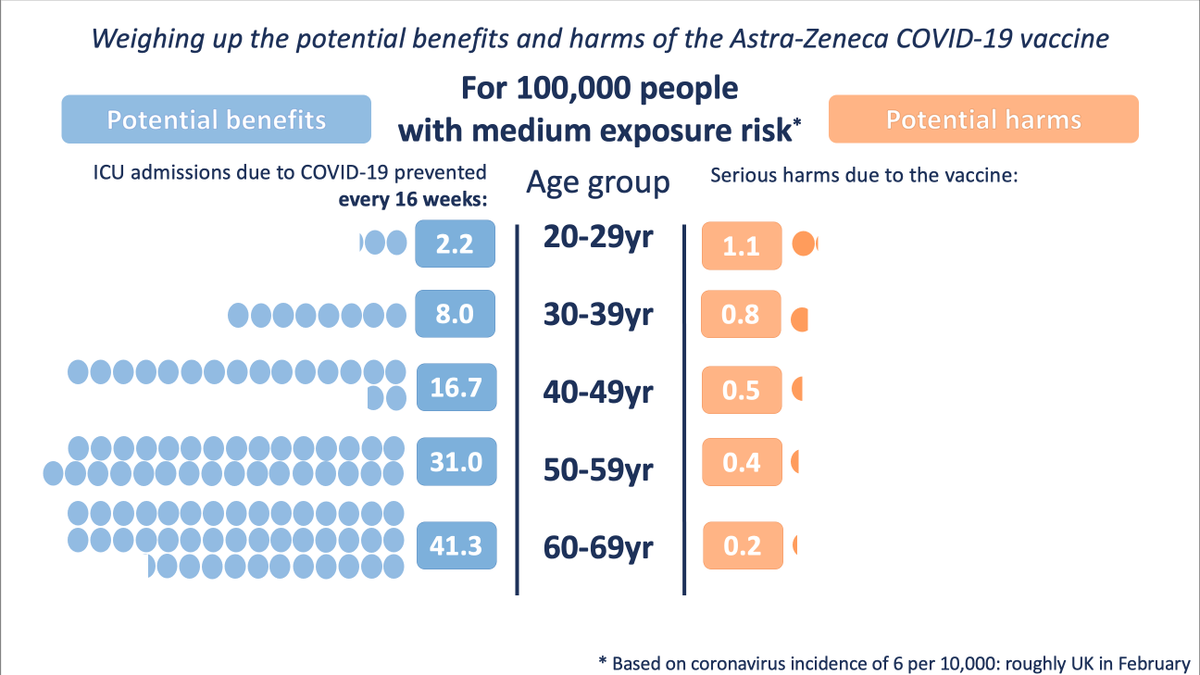
Executive Director of the Winton Centre for Risk & Evidence Communication, University of Cambridge.
Creator of Octopus: https://t.co/YPVogCeNVi
How to get URL link on X (Twitter) App





 We've added a new slide for 'very low exposure' which is based on current incidence of the virus in the UK. Just remember that vaccination benefits keep adding up for every week of protection, which will be longer than the 16 weeks we illustrate. The potential harms are 'one off'
We've added a new slide for 'very low exposure' which is based on current incidence of the virus in the UK. Just remember that vaccination benefits keep adding up for every week of protection, which will be longer than the 16 weeks we illustrate. The potential harms are 'one off'

 In summary, for those developing personal risk calculators:
In summary, for those developing personal risk calculators:



 Avoidance of ICU admission was chosen as a benefit comparator because the potential harms being illustrated are equally severe.
Avoidance of ICU admission was chosen as a benefit comparator because the potential harms being illustrated are equally severe.
